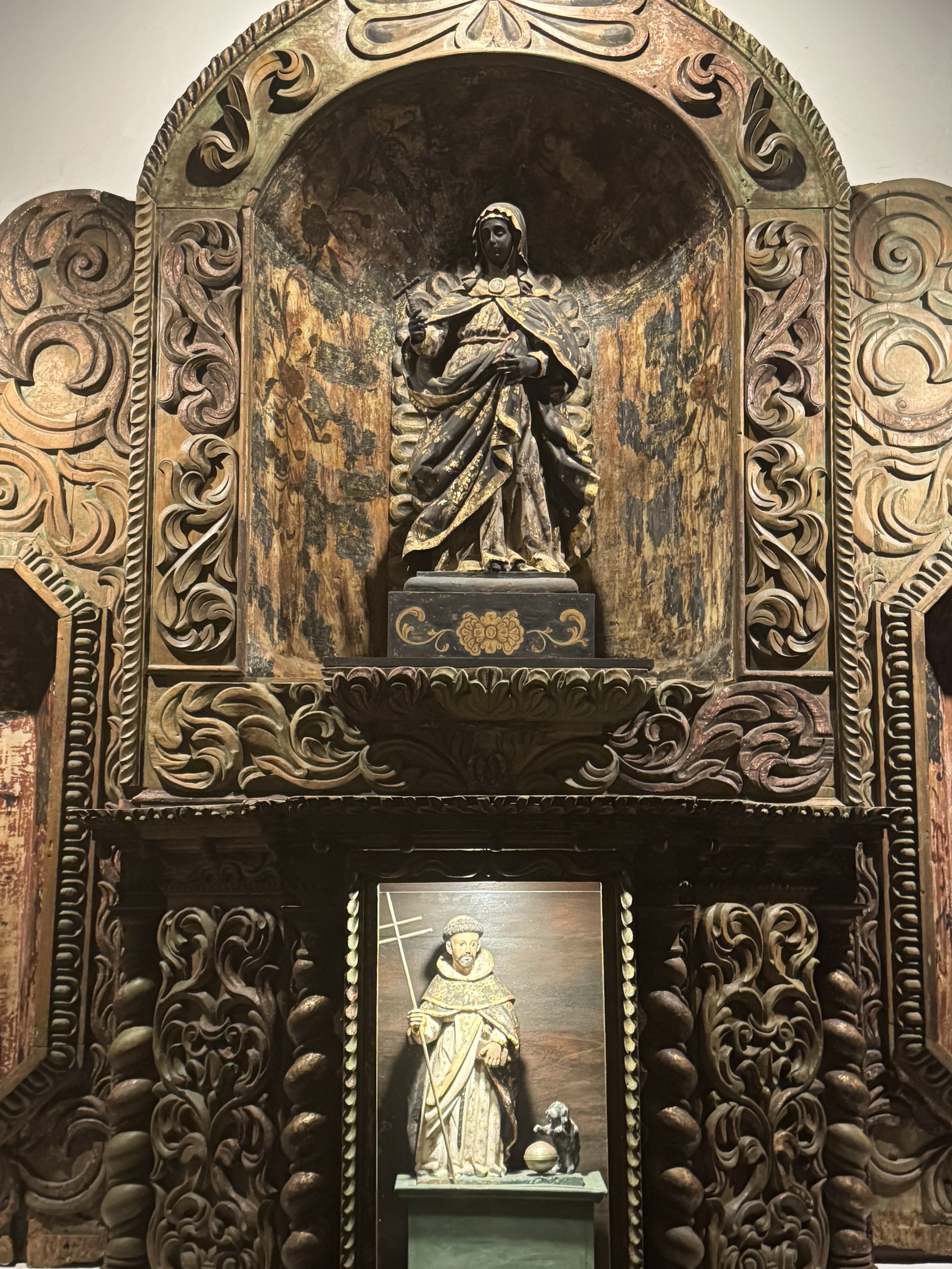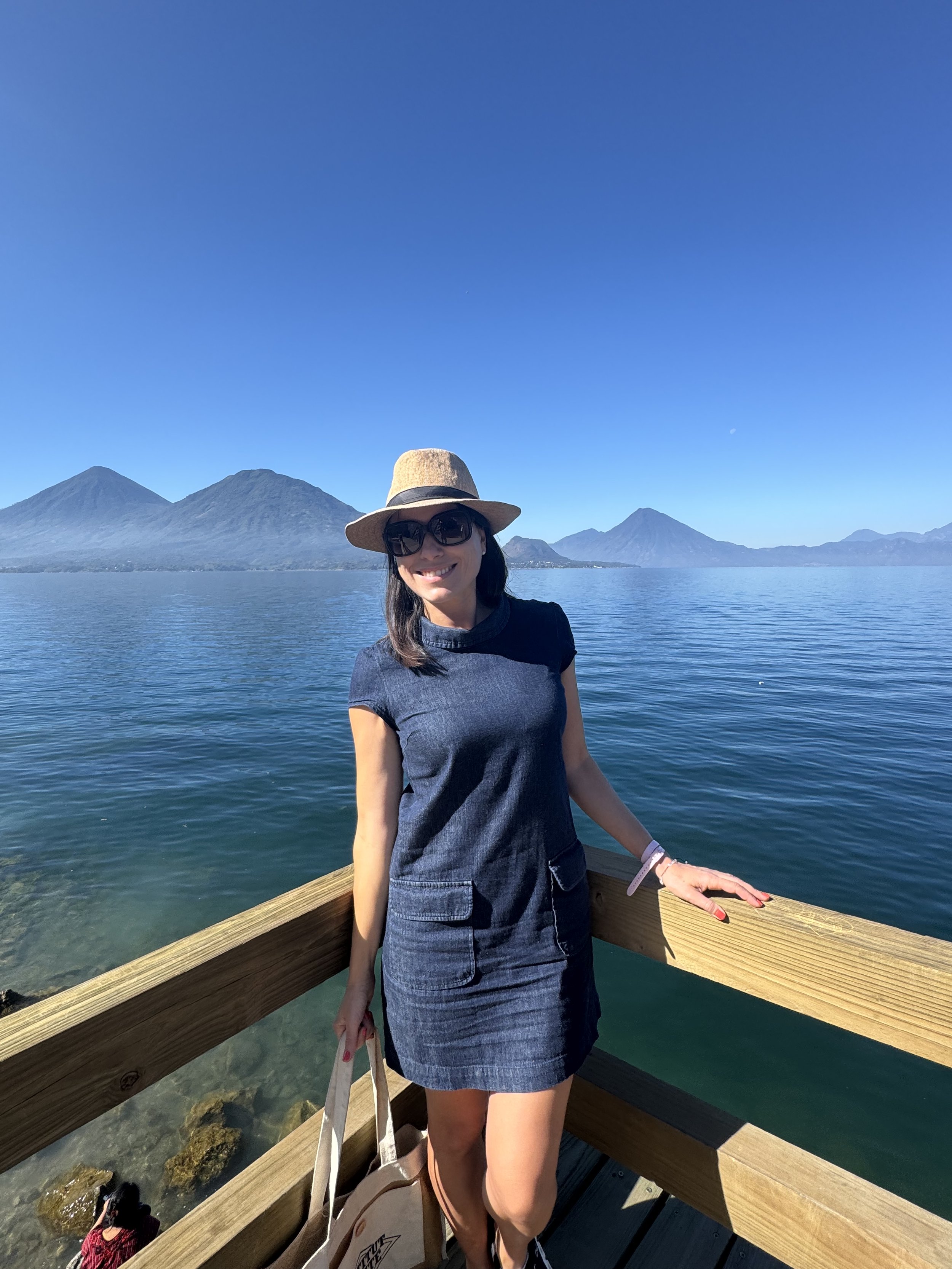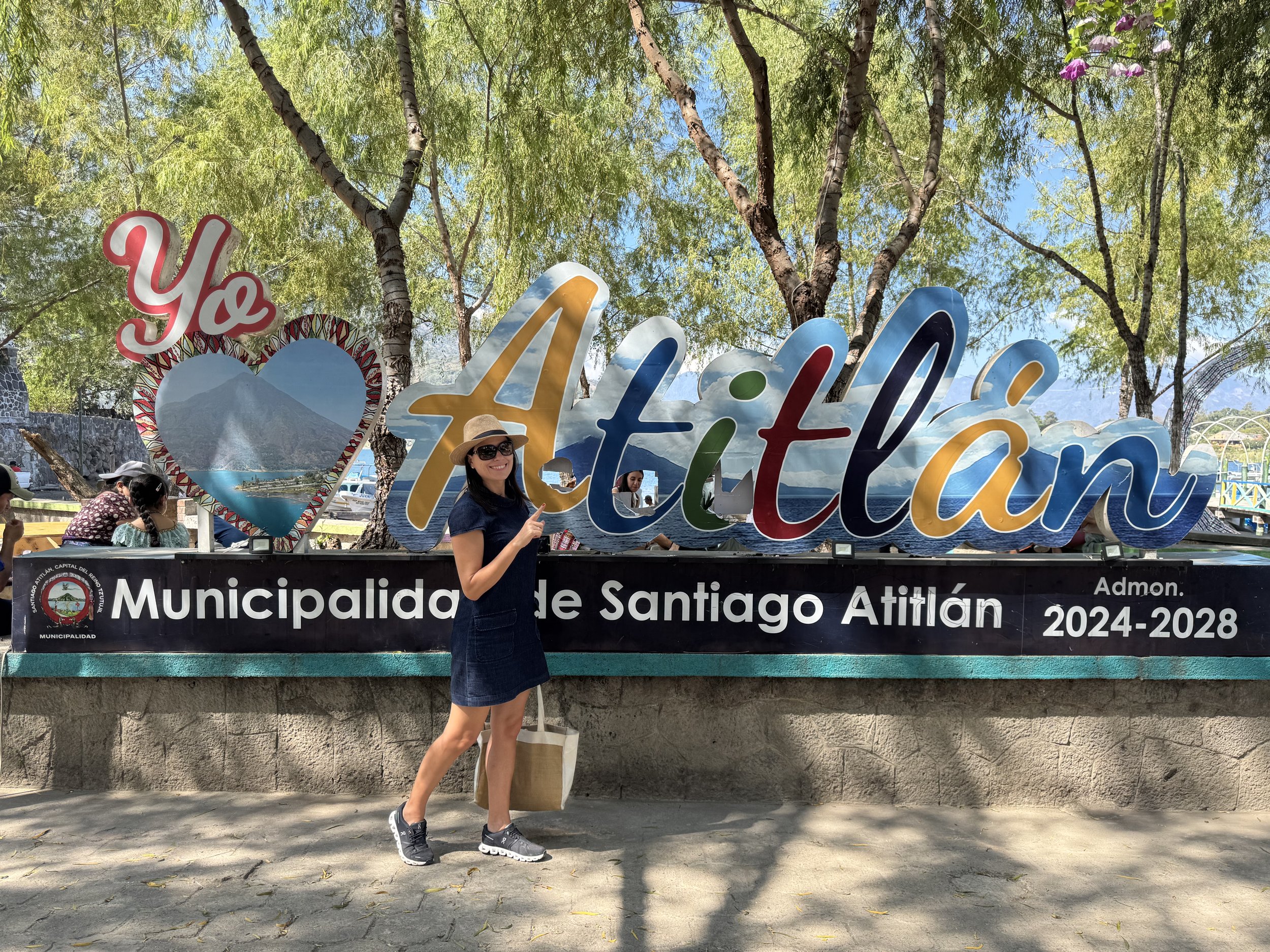Guatemala
La Antigua, the Atitlán Lake villages and a little bit of Guatemala CityIt was Saira, the Guatemalan wellness expert, who inspired @tripticity_ to come to Guatemala. During the hours of massages, she was able to convince me that it was a must-see destination. She was so lovingly recounting the attractions of her native Guatemala that it went on the to-do list. Then, Mr. @tripticity_ had the idea of combining it with a trip to Miami, where we took a cruise through Honduras, Belize and Mexico.
We knew our main interest was to discover La Antigua, ultimately one of the most beautiful colonial towns we had ever been to.
We took a flight of less than three hours from Miami. Upon arrival, the airport was super crowded, so we contacted by Whatsapp with Giovanny, the cab driver that Saira had recommended to us, and we arranged to meet him when we left. Quickly, we got into his vehicle and left for La Antigua.
The road, even on the highway, is easily congested. Being a weekend, the situation was more complex. We also had fun seeing the variety of products that the street vendors offered to the overwhelmed drivers: cool drinks, cookies, bananas, even ice cream served with agility.
Of course, we were tempted by the plataninas, slices of fried plantains with salt, simply delicious.
We were also entertained by the Chicken Buses, the low-cost transport par excellence among Guatemalans. They are old school buses from the United States, converted into medium distance transportation. They are completely painted with bright colors and motifs.
The trip from La Aurora International Airport to La Antigua can take from a little less than an hour to two or three, depending on how much traffic jams the highway.
In our case, after an hour and a half we arrived in La Antigua.
The original name of the city was the Very Noble and Very Loyal City of Santiago de los Caballeros de Guatemala. It is located about 40 kilometers from Guatemala City.
It is located in a seismic zone known as the Pacific Ring of Fire. It was the numerous earthquakes that prompted the relocation of the capital to the presen Ciudad de Guatemala.
Once in town, the car began to lurch from one side to the other, because almost all of its streets are cobblestone, as they were in colonial times.
We had booked the Gran Plaza Euromaya hotel, because of its strategic location just a few blocks from the city's main attraction, the Santa Catalina Arch. But it was quite disappointing that they did not honor the rate quoted on the hotel booking platform. In addition, they did not make the room. In short, not very recommendable.
We checked in and left to take the classic photo with the Arch and the Volcán de Agua behind us. The day was super clear so we enjoyed this stunning postcard.
Like almost all towns in Guatemala, La Antigua is surrounded by volcanoes, with Acatenango, Pacaya and Volcán de Fuego standing out.
Then we strolled through the Central Park. A clarification, in Guatemala, it is called park to what in other parts of Latin America is called square. We continued along the 3rd Oriente, getting lost in the architectural beauty of its colonial houses, very colorful, to the hotel Casa Santo Domingo, in what used to be the old convent.
Then we were overcome by fatigue, after a long day in which we had arrived by cruise ship in the Caribbean to the port of Miami and then take the flight, so right next to the hotel there was a Taco Bell where we had a bite to eat and went to rest.
That night it got cool, because the weather in La Antigua Guatemala, although it is temperate, can register variations in temperature between day and night.
For the next day we had booked a tour that left at five in the morning. We wanted to see Lake Atitlán and some of its unique coastal villages, twelve named after the apostles.
Another popular excursion from La Antigua is to the market of Chichicastenango; and what can we say about the number of tours offered for hiking enthusiasts, such as the one to the Pacaya Volcano.
We hired the tour at the agency that operates in the hotel, another fiasco. It was not very serious.
We left in a comfortable van, for a trip of more than two hours on a road with constant turns, between the slopes.
Lago de Atitlán is a mass of water surrounded by volcanoes, which gives it its unique beauty. It is about three hundred and fifty meters deep and twenty-four kilometers long.
The tour included the boat ride, which served as transportation during the visit to three of the Mayan villages that sprang up on its shores.
Each village surrounding Lago de Atitlán has its own identity.
We started in Panajachel, the most significant urban center. From there we took our small boat that would take us to the next towns.
Then we visited San Antonio Palopo, , from where we had a breathtaking view of the volcanoes surrounding the lake. The day was super clear so the picture was glorious. There we visited a pottery workshop. It was the weekend, so Zoila, the indigenous woman who showed us the process, had no trouble admitting how sleepy she was.
We took the boat again for a short trip to Santiago de Atitlán.
There they explained to us that the indigenous people who live there preserve to this day one of the twenty-two Mayan dialects, Tzuthuil.
First they suggested that we hire lunch, defining the dish to be tasted so that it could be prepared while we toured the town. Of course, we did.
Then we paid the tuk tuk that would take us on the tour. We stopped at a viewpoint for some nice pictures of the lake and its volcanoes, then the visit to the shaman. It is an image of a priest, Mashimo Maximón, called rilajman in the local dialect, which means the great grandfather. The villagers ask him for health, money and love. For a whole year he stays in the house of a family, after which he is moved to another house, just for the 10th of May. The house is chosen by the grandparents, in ceremonies in which they give him rum or aguardiente. It is also customary to give him ties. The peculiarity, which evidences the syncretism of Latin America, is that the shaman, during the Holy Week celebrations, plays the role of Judas Iscariot, during the Way of the Cross on Good Friday.
We climbed back in the tuk tuk to the second oldest church in Guatemala, the church of San Juan Apostle. The ceremony was over, so the faithful of all ages were in the middle of cleaning up. On the outside, the twenty steps stand out, coinciding with the twenty days of each month of the Mayan calendar. In its interior, the commemoration to Blessed Stanley Francis Rother, who died as a consequence of the civil war that affected the country, stands out. His heart is buried there, in the church of Santiago Apostle.
All the indigenous people were that day in their typical dress; the men in their pants (the cutos), sash and shirt, and the women in their huipil.
As we left, our attention was drawn to a family of locals who looked like they had just participated in the religious ceremonies. They were Salvador Chumil, his wife and their little daughter Concepción. Before our interest in what they were about to eat, they did not hesitate to tell us that it was a maxan leaf tamale.
From there we went to the workshop of a plastic artist, Calin, who works with the technique of bird's eye view, a zenithal point of view, and hacha, or ant's eye view, with the perspective from below, using pointillism.
When we finished the tour, we headed to the restaurant to enjoy a fried mojarra and some shrimp “ to die for”. The witty presentation of the dishes was typical of a Michelin-starred restaurant, as was the taste of these delicacies, which we decided to accompany with local beer.
Finally, we visited San Juan La Laguna, very crowded with the typical circuit of colored umbrellas marking the tourist passage. There we visited a local honey producer and a chocolate factory, where we had fun tasting the fruit of the wild cocoa.
On the way back to Panajachel another van was waiting for us, this time a small and super uncomfortable one that would take us back to La Antigua. The tour agency Cyman Travel, as well as its service provider, Magic Travel, were not very serious. Be careful!
Upon arriving in La Antigua, we celebrated with some Apperol Spritz to get to know these Mayan villages where their culture is still preserved, as evidenced by their gastronomy, their clothing and even their own language. It was at Casa Troccoli, very close to the Arco de Santa Catalina, a bar-restaurant in what used to be an old general store that preserved its antique furniture as well as its antiques. A marvel. It also has a wine cellar with samples of the main wine centers of the world. It was a pleasure to confirm that there were some high quality wines from our native Salta for sale.
The next day, it was time to explore the historic center of La Antigua. We started at the beautiful Church of La Merced, built in 1767.
Then we took a tuk tuk to avoid the tedious climb to Cerro de la Cruz. From the top, you get a breathtaking view of the historic center of the city and the three volcanoes that surround the city: Agua, Fuego and Acatenango. To climb, a recommendation, check that the volcano is clear, because it is usual that the clouds cover it.
Many of the convents of La Antigua are in ruins, but it is worth visiting them, such as the Convent of Santa Clara, Santo Domingo and the Capuchinas.
In the Central Park, obviously stands out the Cathedral of San José, with its new construction, but behind it are the ruins of the old Cathedral of Santiago, with its columns and the remains of the open sky dome.
The Arch of Santa Catalina is wonderful, so we returned to take another picture with the Water Volcano in the background. It was built so that the cloistered nuns of the Convent of Santa Catalina could cross between the buildings without being seen. After the earthquake of 1773, the tower with the clock was added.
We continue on to Tanque La Union. In colonial times, only the wealthy had a laundry, so the people used these public pools to wash their clothes. Its construction is an icon of La Antigua.
In the Centro de Formación de la Cooperación Española you can find a variety of local stores with local handicrafts.
And we toured the Mercado de Artesanías El Carmen, right next to the Church of Nuestra Señora de El Carmen, which offers local products and souvenirs for tourists.
You can also visit the National Art Museum of Guatemala.
Before Giovanny picked us up from La Antigua to take us back to Ciudad de Guatemala we wanted to try authentic Guatemalan tacos. We chose Ta'Cool, sitting near the window to enjoy the view of the Antiguo Colegio de la Compañía de Jesús. A delight.
For dessert, we opted to delight in Casa Escobar, right next door, with another phenomenal view of those ruins. We sat and enjoyed the view of the church façade while savoring a reversion of créme brulée stuffed with chilacayote and the sweet tradition, that is, plantains in mole sauce with traditional Guatemalan cocoa. Extraordinary. We were able to combine it with a Zinfandel rosé. The pairing was perfect.
By then it was time to return to Ciudad de Guatemala. We had agreed with Giovanny that once in the city he would take us to Constitución Park. It is the main square where the Metropolitan Cathedral of Santiago de Guatemala and the National Palace of Culture are located.
We had decided to stay that night in Zone 10, because of its proximity to the airport, since the next morning we were leaving for Miami early in the morning.
So we chose the Wyndham Garden Guatemala City for its good price. But before we got there, we asked Giovanny to stop by the Torre del Reformador, a symbol of the city, built in 1935 in honor of Justo Rufino Barrios, a former president of Guatemala. The traffic there again collapsed, so we took the opportunity to buy some plantains from a street vendor, as if to say goodbye to Guatemala with its rich flavors.
That night, we decided to have a few drinks on the rooftop of the Hyatt Centric Guatemala City, just around the corner from our lodging, as if to celebrate those three intense days in the Mayan land.
And so we said goodbye to Guatemala knowing that we still have to visit the Tikal National Park Parque Nacional Tikal and its Mayan archaeological ruins in the middle of the Guatemalan jungle.























































